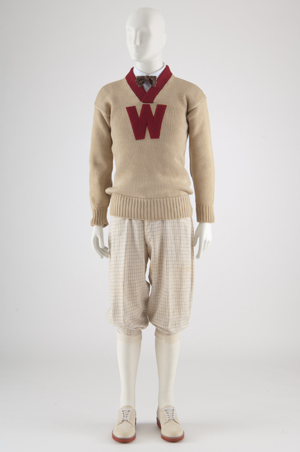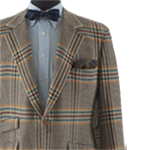

The United States did not invent sportswear per se, nor did it originate the idea of wearing sports clothes for non-athletic endeavors. However, Ivy League students did adopt that trend more than a century ago, and set it in motion in the U.S.
For example, from golf they appropriated the rough tweed suit worn with a vest or sweater, knickers, and kiltied brogue shoes; from tennis came the wearing of white V-neck sweaters, white flannel trousers, and white buckskin shoes, or bucs. Also spelled "bucks," they began to display black or brown accents around the time of World War I; by the early 1930s, two-toned leather versions appeared, known as saddle shoes.
The name "Ivy League" may have originated in the athletic arena. Sports writers were using it as early as the 1930s, but the term wasn't adopted as an official designation until 1954, following the formation of the NCAA Division I athletic conference.
However, legend has it that "Ivy League" grew out of a desire to establish a set of rules governing intercollegiate athletic competition during the mid-19th century, when football was a seriously violent game. In 1876, representatives from four schools—Harvard, Yale, Princeton, and Columbia—convened to create a moniker using the Roman numeral for four—IV—and the phonetic pronunciation of the letters "I" and "V."
Active wear and sports clothing provided inspiration for many Ivy style trends. This was especially true prior to World War II. Sports were a vital part of Ivy League culture; in fact, baseball and American football were popularized on the campuses of Ivy universities.

